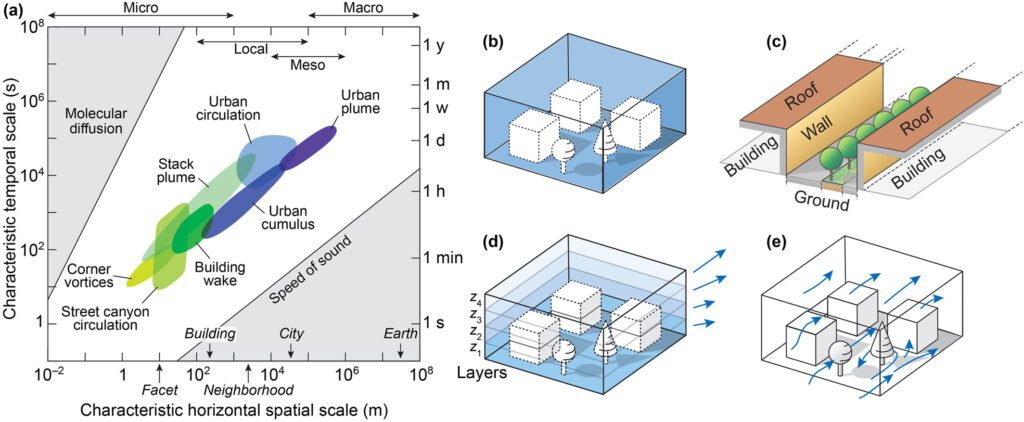Our new paper, “Ultrafine-resolution urban climate modeling: Resolving processes across scales“, is published in Journal of Advances in Modeling Earth Systems (IF: 4.6).
The paper can be downloaded at https://agupubs.onlinelibrary.wiley.com/doi/full/10.1029/2025MS005053.
Authors: Chenghao Wang, Yongling Zhao, Qi Li, Zhi-Hua Wang, & Jiwen Fan
Abstract: Recent advances in urban climate modeling resolution have improved the representation of complex urban environments, with large-eddy simulation (LES) as a key approach, capturing not only building effects but also urban vegetation and other critical urban processes. Coupling these ultrafine-resolution (hectometric and finer) approaches with larger-scale regional and global models provides a promising pathway for cross-scale urban climate simulations. However, several challenges remain, including the high computational cost that limits most urban LES applications to short-term, small-domain simulations, uncertainties in physical parameterizations, and gaps in representing additional urban processes. Addressing these limitations requires advances in computational techniques, numerical schemes, and the integration of diverse observational data. Machine learning presents new opportunities by emulating certain computationally expensive processes, enhancing data assimilation, and improving model accessibility for decision-making. Future ultrafine-resolution urban climate modeling should be more end-user oriented, ensuring that model advancements translate into effective strategies for heat mitigation, disaster risk reduction, and sustainable urban planning.
DOI: https://doi.org/10.1029/2025MS005053

